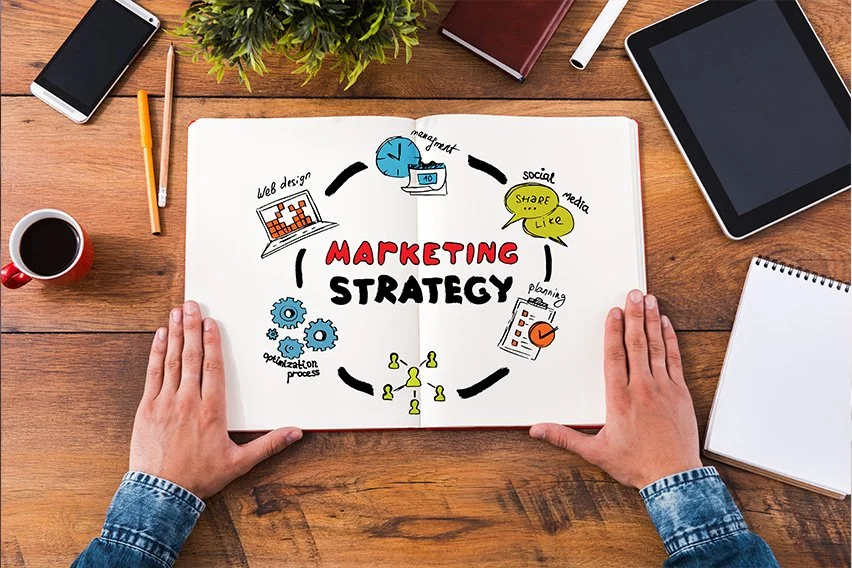Effective marketing is crucial for increasing conversions on your eCommerce website. It involves understanding your target audience, leveraging various strategies to attract them, and nurturing them through the buying process. Here’s an in-depth look at how effective marketing can help boost your conversions.
Understanding Your Target Audience
Before diving into specific marketing strategies, it’s essential to have a clear understanding of your target audience. This involves researching their demographics, preferences, and pain points. By knowing who your customers are, you can tailor your marketing efforts to resonate with them, making it more likely they will convert.
Building Brand Awareness
One of the primary goals of marketing is to build brand awareness. When potential customers are familiar with your brand, they are more likely to trust you and make a purchase. Effective marketing strategies such as social media advertising, content marketing, and email campaigns can help establish your brand in the minds of consumers.
- Social Media Marketing: Platforms like Instagram, Facebook, and TikTok allow you to showcase your products visually and engage directly with your audience. Make sure to count with the best solution for ecommerce photography to showcase your products in the best light possible, combine this with customer testimonials, product demos, and behind-the-scenes content to create a relatable brand image.
- Content Marketing: High-quality blog posts, videos, and infographics can provide valuable information while subtly promoting your products. For example, if you sell skincare products, writing articles about skincare routines can attract potential customers and guide them towards your products.
- Email Marketing: Building an email list and sending regular newsletters can keep your brand at the forefront of your audience’s minds. Share promotions, new product launches, and valuable content to maintain engagement.
Creating Effective Calls-to-Action (CTAs)
A well-crafted call-to-action is crucial for guiding visitors toward conversion. Your CTAs should be clear, compelling, and strategically placed throughout your website. Effective CTAs encourage users to take specific actions, such as “Shop Now,” “Subscribe for Discounts,” or “Learn More.” A/B testing different CTAs can help you determine which phrasing or design resonates best with your audience.
Utilizing Search Engine Optimization (SEO)
Search engine optimization is vital for driving organic traffic to your website. By optimizing your site for relevant keywords, you can increase visibility on search engines, making it easier for potential customers to find you. This involves:
- Keyword Research: Identify the keywords your target audience is searching for and incorporate them into your product descriptions, blog posts, and meta tags.
- On-Page SEO: Ensure your website is user-friendly and optimized for search engines. This includes optimizing page load speeds, ensuring mobile responsiveness, and using descriptive alt tags for images.
- Link Building: Acquire backlinks from reputable sites to improve your site’s authority, which can positively impact your search rankings.
Leveraging Social Proof
Social proof, such as reviews and testimonials, plays a significant role in influencing purchasing decisions. Potential customers are more likely to convert if they see positive feedback from others. Incorporating reviews, ratings, and user-generated content on your website can help build trust.
- Encourage Reviews: After a purchase, send follow-up emails asking customers to review their experience. Offer incentives, like discounts on future purchases, to encourage participation.
- Showcase Testimonials: Highlight positive testimonials prominently on your homepage or product pages. This reassures potential buyers that others have had a positive experience with your brand.
Implementing Retargeting Campaigns
Not all visitors to your site will convert immediately. Retargeting campaigns can help recapture their attention. By showing targeted ads to users who have previously visited your site, you remind them of their interest in your products.
- Dynamic Ads: Use dynamic retargeting ads to showcase specific products users viewed, increasing the likelihood of conversion.
- Email Reminders: Send reminder emails to users who abandoned their carts, encouraging them to complete their purchase.
Offering Promotions and Discounts
Special offers can entice customers to make a purchase. Effective marketing strategies include:
- Limited-Time Offers: Create urgency by promoting limited-time discounts or exclusive deals. Phrases like “Hurry, only a few left!” can encourage immediate action.
- First-Time Buyer Discounts: Attract new customers by offering a discount on their first purchase. This can help overcome initial hesitations.
- Free Shipping: Many consumers prioritize free shipping. Offering it either as a standard or above a certain purchase threshold can encourage larger transactions.
Enhancing User Experience
An often-overlooked aspect of marketing is the overall user experience on your website. A seamless, enjoyable shopping experience can significantly impact conversion rates.
- Simplify Navigation: Ensure your site is easy to navigate. Use clear categories, filters, and a robust search function to help users find products quickly.
- Mobile Optimization: With a growing number of consumers shopping via mobile devices, ensuring your site is mobile-friendly is crucial.
- Streamlined Checkout Process: Minimize the number of steps required to complete a purchase. A complicated checkout process can lead to cart abandonment.
Analyzing and Adapting
Effective marketing is an ongoing process. Regularly analyze your website’s performance using tools like Google Analytics. Track key metrics such as conversion rates, bounce rates, and average order values. Use this data to adapt your marketing strategies and optimize your website for better performance.
Conclusion
Effective marketing is integral to increasing conversions on your eCommerce website. By understanding your audience, building brand awareness, optimizing for search engines, utilizing social proof, implementing retargeting campaigns, offering promotions, enhancing user experience, and continuously analyzing your performance, you can create a robust marketing strategy that drives sales. As you continue to refine your approach, you’ll not only boost conversions but also build long-term relationships with your customers, ultimately leading to sustained growth for your business.
